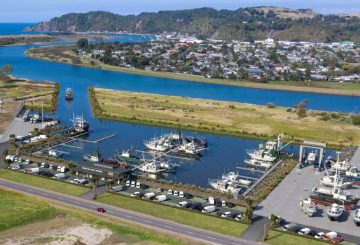제임스 쇼 (James Shaw) 는 새로운 자금으로 인해 기후 변화에 초점을 맞춘 뉴질랜드 최대 직접 투자자 중 하나가 되었다고 말했다.
제임스 쇼 (James Shaw) 기후 변화 장관은 예산 전 발표에서 정부가 녹색 투자 은행의 자금을 거의 두 배로 늘렸다고 밝혔다.
그린 인베스트먼트 파이낸스는 저공해 기업에 투자하기 위해 설립된 상업적이고 독립적인 기업입니다.
미국의 기후 배출량을 줄이는 것을 목표로 하는 이 펀드는 3억 달러의 신규 자금이 투입되어 총 투자 규모가 7억 달러에 달했습니다.
이전에는 상업용 건물에 태양 전지판을 설치하는 회사, 버스와 상업용 차량을 전기 자동차로 전환하는 회사, 비료에 대한 농업 투자에 자금을 빌려주었습니다.
지금까지 16건의 투자가 이루어졌으며 약 2억 8천만 달러의 자금이 투입되었습니다.
쇼는 신규 투자가 없었다면 내년까지 펀드가 매각되었을 것이라고 말했다.
Shaw는 새로운 자금으로 인해 기후 변화에 초점을 맞춘 뉴질랜드 최대 직접 투자자 중 하나가 되었다고 말했습니다.
그는 GIF가 자신이 원하는 크기와 규모에 도달하기 시작했으며 자본 투입은 아마도 3~5년 동안 지속될 것이라고 말했습니다.
이 자금은 기후 비상 대응 기금에서 나옵니다. 기후 비상 대응 기금은 배출권 거래 제도에서 징수된 수입으로 충당됩니다.
크레딧: radionz.co.nz




























































